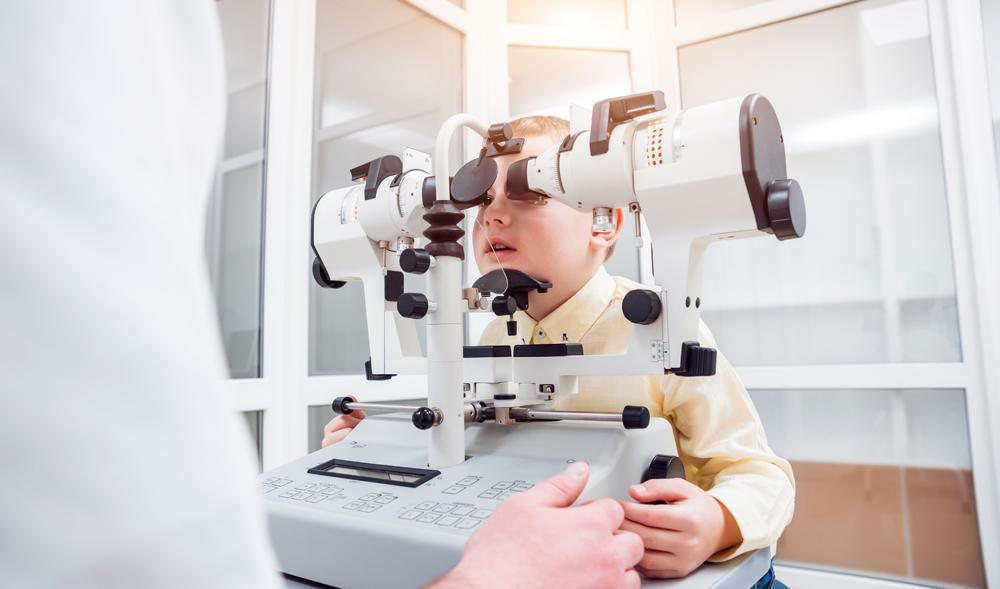Best Refractive Surgeries in AL: State-of-the-Art Eye Care
Best Refractive Surgeries in AL: State-of-the-Art Eye Care
Blog Article
The Duty of Advanced Diagnostic Devices in Identifying Eye Disorders
In the realm of ophthalmology, the usage of sophisticated analysis devices has actually revolutionized the early identification and administration of different eye conditions. From identifying subtle changes in the optic nerve to keeping an eye on the development of retinal conditions, these modern technologies play a crucial duty in boosting the precision and performance of detecting eye problems. As the need for exact and prompt diagnoses remains to grow, the integration of advanced tools like optical coherence tomography and aesthetic area screening has ended up being important in the realm of eye care. The intricate interaction in between innovation and ophthalmic practices not just loses light on complex pathologies however also opens up doors to customized treatment strategies.
Significance of Very Early Diagnosis
Very early diagnosis plays a pivotal function in the effective administration and treatment of eye conditions. Prompt identification of eye problems is important as it enables timely treatment, potentially protecting against further progression of the condition and minimizing long-lasting complications. By finding eye disorders at an onset, healthcare suppliers can offer proper therapy plans tailored to the certain problem, ultimately causing far better outcomes for clients. In addition, early diagnosis enables people to gain access to essential assistance solutions and sources earlier, improving their overall quality of life.

Technology for Detecting Glaucoma
Cutting-edge analysis innovations play an essential role in the very early detection and surveillance of glaucoma, a leading reason for irreversible loss of sight worldwide. One such innovation is optical coherence tomography (OCT), which gives in-depth cross-sectional pictures of the retina, permitting the measurement of retinal nerve fiber layer density. This measurement is essential in analyzing damage brought on by glaucoma. One more innovative tool is aesthetic field screening, which maps the sensitivity of a person's visual area, helping to find any locations of vision loss characteristic of glaucoma. Furthermore, tonometry is used to determine intraocular stress, a major danger factor for glaucoma. This test is critical as elevated intraocular pressure can bring about optic nerve damage. Newer modern technologies like the usage of artificial intelligence algorithms in assessing imaging information are showing promising results in the early discovery of glaucoma. These innovative analysis devices enable ophthalmologists to identify glaucoma in its beginning, enabling prompt treatment and far better management of the disease to avoid vision loss.
Function of Optical Coherence Tomography
OCT's capability to measure retinal nerve fiber layer density permits for specific and unbiased dimensions, assisting in the very early discovery of glaucoma also prior to aesthetic area issues come to be noticeable. Overall, OCT plays a crucial role in enhancing the analysis precision and monitoring of glaucoma, eventually contributing to much better outcomes for individuals at risk of vision loss.
Enhancing Medical Diagnosis With Visual Area Screening
A necessary element in extensive ophthalmic assessments, visual area screening plays a critical role in enhancing the diagnostic procedure for different eye disorders. By assessing the complete level of a client's visual area, this examination offers essential details regarding the functional integrity of the whole visual path, from the retina to the aesthetic cortex.
Visual area testing is specifically useful in the diagnosis and monitoring of conditions such as glaucoma, optic nerve problems, and different neurological illness that can affect vision. eyecare near me With measurable dimensions of peripheral and central vision, medical professionals can discover subtle modifications that may show the presence or development of these disorders, also before obvious signs and symptoms occur.
In addition, visual area screening enables for the surveillance of treatment effectiveness, aiding ophthalmologists customize therapeutic interventions to specific patients. eyecare near me. By tracking modifications in aesthetic area performance gradually, doctor can make enlightened decisions regarding readjusting medications, recommending surgical treatments, or implementing other suitable actions to preserve or improve a client's aesthetic feature
Taking Care Of Macular Degeneration

Conclusion
In verdict, advanced analysis devices play a vital role in determining eye disorders early. Technologies such as Optical Comprehensibility Tomography and visual area testing have greatly enhanced the precision and efficiency of identifying problems like glaucoma and macular degeneration. Early detection enables timely treatment and administration of these problems, ultimately causing better results for patients. It is important for health care specialists to stay updated on these improvements to provide the finest possible take care of their clients. eyecare near me.
Report this page